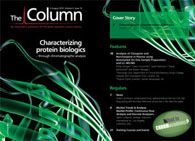Oil spill response
Thermo Fisher Scientific has announced that its global Food Safety Response Centre in Dreieich, Germany, has developed two new analytical screening methods in response to the oil spill in the Gulf of Mexico.

Thermo Fisher Scientific has announced that its global Food Safety Response Centre in Dreieich, Germany, has developed two new analytical screening methods in response to the oil spill in the Gulf of Mexico. Oil samples collected from the Gulf region were used to develop the step-by-step testing procedures for detecting petroleum contamination in oysters and fish, specifically hydrocarbons and polyaromatic hydrocarbons.
“We created our global Food Safety Response Centre to help our laboratory customers around the world quickly mobilize during a food contamination crisis,” said Marc N. Casper, the company’s president and CEO. “The incident in the Gulf is a clear example of the type of threat the centre can address.” The centre was opened earlier this year and is reported to be equipped with the company’s latest equipment including liquid and gas chromatography and mass spectrometry.
According to Casper, “Our new methods for detecting petroleum in oysters and fish were designed to significantly reduce analysis time and enable our customers to meet the demand for rapid and reliable testing of seafood from the Gulf for the foreseeable future.”
To download the methods visit www.thermofisher.com
This story originally appeared in The Column. Click here to view that issue.
Analytical Challenges in Measuring Migration from Food Contact Materials
November 2nd 2015Food contact materials contain low molecular weight additives and processing aids which can migrate into foods leading to trace levels of contamination. Food safety is ensured through regulations, comprising compositional controls and migration limits, which present a significant analytical challenge to the food industry to ensure compliance and demonstrate due diligence. Of the various analytical approaches, LC-MS/MS has proved to be an essential tool in monitoring migration of target compounds into foods, and more sophisticated approaches such as LC-high resolution MS (Orbitrap) are being increasingly used for untargeted analysis to monitor non-intentionally added substances. This podcast will provide an overview to this area, illustrated with various applications showing current approaches being employed.
Advances in Non-Targeted Analysis for PFAS in Environmental Matrices
March 27th 2025David Megson from Manchester Metropolitan University in Manchester, UK, spoke to LCGC International about the latest developments in non-targeted analysis (NTA) of per- and polyfluoroalkyl substances (PFAS) in environmental matrices based on a recent systematic review paper he has collaboratively published (1).
Study Explores Thin-Film Extraction of Biogenic Amines via HPLC-MS/MS
March 27th 2025Scientists from Tabriz University and the University of Tabriz explored cellulose acetate-UiO-66-COOH as an affordable coating sorbent for thin film extraction of biogenic amines from cheese and alcohol-free beverages using HPLC-MS/MS.












